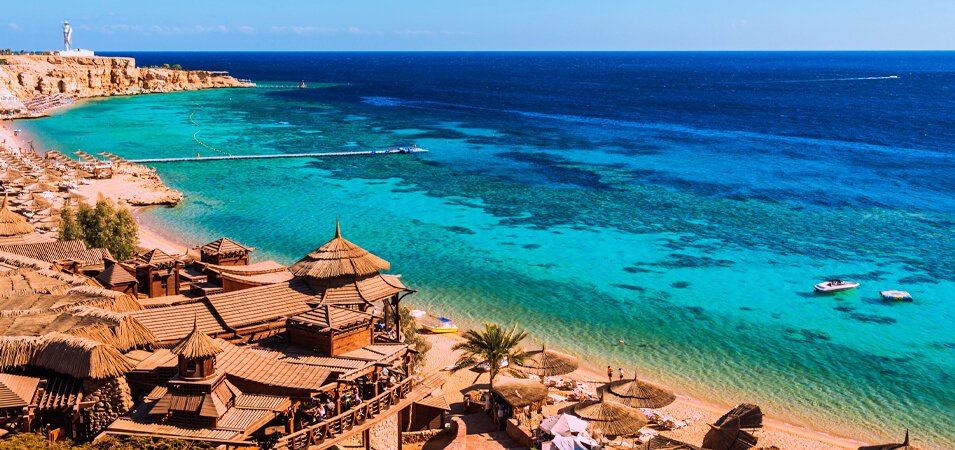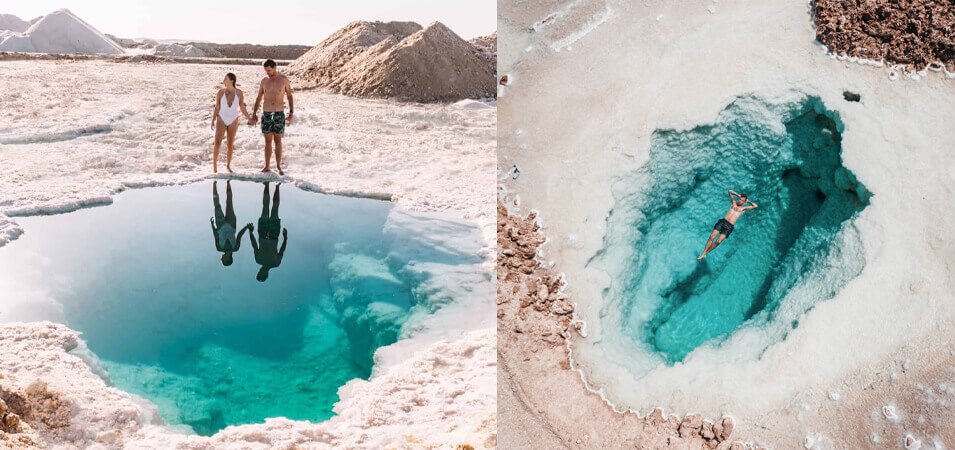Before you ask about the best time to visit Egypt, you should know Egypt as a country. a land of timeless wonders and breathtaking landscapes is one of the world’s most captivating travel destinations. Whether you dream of exploring the iconic Pyramids of Giza, cruising along the Nile, or diving into the vibrant underwater world of the Red Sea, Egypt has something for everyone.
However, when planning your trip to Egypt, timing is everything. Egypt’s diverse climate means that your travel experience can vary greatly depending on the season. The blazing summer sun may be perfect for coastal adventures but challenging for exploring open desert sites, while winter’s cooler temperatures make it ideal for sightseeing yet bring more tourists to major attractions.
You can book Egypt Travel Packages through Egypt Day Tours and get a discount of up to 15%
Understanding Egypt’s Climate
Egypt’s climate is as diverse as its landscapes, ranging from arid deserts to breezy Mediterranean coasts. Its geography shapes distinct weather patterns, making certain regions and seasons more suitable for specific activities. To help you plan the perfect trip, let’s break down Egypt’s seasons, regional climate variations, and average temperatures.
Overview of Egypt’s Seasons
Egypt experiences four main seasons, though the variations are less dramatic than in other parts of the world due to its predominantly desert climate:
- Winter (December to February): Winters in Egypt are mild, with pleasant daytime temperatures averaging between 50–70°F (10–21°C). It’s the most comfortable time for sightseeing and outdoor adventures. Nights can get chilly, particularly in the desert.
- Spring (March to May): A delightful time to visit, spring brings moderate temperatures ranging from 60–80°F (15–27°C). However, occasional sandstorms, known as “khamsin winds,” may occur.
- Summer (June to August): Summers are hot, especially in Upper Egypt (Luxor and Aswan), where temperatures can soar above 104°F (40°C). Coastal areas like the Red Sea provide some relief with sea breezes.
- Fall (September to November): As temperatures begin to cool down, fall offers comfortable weather, making it another excellent time for travel.
Understanding these seasonal shifts ensures you’ll know The Best Time to Visit Egypt.

Regional Climate Variations
Egypt’s climate varies significantly depending on the region, with each area offering unique weather conditions:
- Nile Valley and Cairo:
- Cairo and the Nile Valley experience hot, dry summers and mild winters.
- Summers (June to August): Temperatures often range from 70–95°F (21–35°C).
- Winters (December to February): Cooler with highs around 65°F (18°C) and lows dipping to 50°F (10°C).
- Red Sea and Sinai:
- These coastal regions enjoy milder weather year-round, with summer temperatures rarely exceeding 90°F (32°C).
- Winter is particularly pleasant, making it perfect for beach vacations and water activities.
- Western Desert:
- Known for its extreme temperature fluctuations, the desert experiences scorching days and chilly nights.
- Summers can reach 115°F (46°C), while winter nights may drop to near freezing.
Average Temperatures and Rainfall Chart
Below is a snapshot of seasonal temperatures and rainfall in Egypt’s key cities:
| City | Winter (Dec–Feb) | Spring (Mar–May) | Summer (Jun–Aug) | Fall (Sep–Nov) |
|---|---|---|---|---|
| Cairo | 50–65°F (10–18°C) | 60–80°F (15–27°C) | 70–95°F (21–35°C) | 60–85°F (16–29°C) |
| Luxor | 45–70°F (7–21°C) | 60–85°F (15–29°C) | 75–105°F (24–40°C) | 65–90°F (18–32°C) |
| Aswan | 50–72°F (10–22°C) | 65–90°F (18–32°C) | 80–110°F (27–43°C) | 70–95°F (21–35°C) |
| Alexandria | 55–65°F (13–18°C) | 60–75°F (15–24°C) | 70–85°F (21–29°C) | 65–80°F (18–27°C) |
Rainfall:
- Rain is rare in most parts of Egypt, particularly in desert regions. The Mediterranean coast (e.g., Alexandria) sees the highest rainfall, though it’s still minimal compared to global standards (20–50 mm during winter months).
With this knowledge, you can tailor your trip to match the season and region that best suits your travel plans.
The Best Time to Visit Egypt: Best Months
Choosing the right time to visit Egypt can make all the difference in your travel experience. Egypt’s unique climate and seasonal patterns affect everything from comfort to crowd levels. Let’s dive into the best months to explore this fascinating country based on the high, shoulder, and low seasons.
High Season (October to April)
- This is Egypt’s most popular travel period, offering cooler and more comfortable weather.
- Average daytime temperatures range between 65–80°F (18–27°C), making it perfect for outdoor exploration.
- The mild conditions are ideal for visiting Egypt’s iconic sites, from the Pyramids of Giza to the Valley of the Kings.
Benefits:
- Desert Excursions: Cooler temperatures make desert safaris, camel treks, and stargazing in places like the White Desert enjoyable.
- Nile Cruises: This is the best time for cruising along the Nile, with comfortable conditions for sightseeing in Luxor and Aswan.
- Temple Visits: Exploring vast archaeological sites like Abu Simbel and Karnak is more pleasant without the oppressive heat.
Shoulder Seasons (May and September)
Overview:
- May and September offer a balance of favorable weather and fewer tourists.
- Temperatures are warmer than the high season, ranging between 70–90°F (21–32°C), but still manageable for many activities.
Activities to Enjoy:
- Diving in the Red Sea: The waters are warm and visibility is excellent, making these months perfect for scuba diving and snorkeling in Sharm El Sheikh, Dahab, or Marsa Alam.
- Exploring Alexandria: The Mediterranean coast offers a refreshing retreat from the rising temperatures inland. Stroll along Alexandria’s Corniche and visit its historic landmarks.
- Outdoor Adventures: Early mornings and evenings remain comfortable for sightseeing in Cairo and Luxor.
Low Season (June to August)
Challenges:
- Egypt’s summer is characterized by intense heat, particularly in Upper Egypt (Luxor and Aswan), where temperatures often exceed 104°F (40°C).
- Outdoor activities in open, unshaded areas can become challenging and exhausting.
Travel Tips:
- Focus on Coastal Destinations: Escape the heat by heading to Sharm El Sheikh, Hurghada, or Marsa Alam. The Red Sea’s beaches and waters provide a refreshing respite with average temperatures around 90°F (32°C).
- Stay in air-conditioned accommodations and plan activities during the cooler parts of the day, such as early mornings or evenings.
- Consider exploring indoor attractions like the Egyptian Museum in Cairo or the Bibliotheca Alexandrina in Alexandria.
Best Time for Activities in Egypt

Egypt offers a plethora of activities catering to history buffs, adventure seekers, and nature enthusiasts. The timing of your visit can greatly enhance your experience, ensuring you get the most out of each activity. Below, we explore the best times to enjoy Egypt’s historical, aquatic, and desert offerings.
Visiting Historical Sites
Egypt’s ancient treasures, such as the Pyramids of Giza, the temples of Luxor, and the tombs in the Valley of the Kings, are best explored during the cooler months.
Best Months:
- October to March: These months offer mild weather, with temperatures ranging from 65–80°F (18–27°C), ideal for walking through vast archaeological sites.
Nile Cruises
Sailing along the Nile is one of the most iconic experiences in Egypt, offering stunning views of riverside temples and lush landscapes.
Ideal Periods:
- November to February: The cooler weather ensures comfortable daytime excursions from the cruise, such as visits to Luxor’s Karnak Temple or Aswan’s Philae Temple.
- March and October: Shoulder season months still provide pleasant conditions, with fewer tourists on board.
Scuba Diving and Snorkeling
The Red Sea is a paradise for underwater enthusiasts, known for its crystal-clear waters, vibrant coral reefs, and diverse marine life.
Seasonal Red Sea Conditions:
- April to October: The best time for diving, as water temperatures are warm (74–84°F or 23–29°C), and marine biodiversity is at its peak.
- November to March: While still suitable for diving, water temperatures drop slightly, requiring a wetsuit for extended dives.
Desert Adventures and Safari
Egypt’s deserts are a haven for adventure seekers, offering activities such as camel trekking, dune bashing, and stargazing under crystal-clear skies.
Best Times:
- October to April: These months bring cooler weather, making it enjoyable to explore the vast Western Desert or the Sinai Peninsula.
- Evenings and Early Mornings: Even during hotter months, desert activities are best scheduled at these times to avoid midday heat.
Planning Tips for Best Time to Travel to Egypt
To make the most of your trip to Egypt, it’s important to prepare based on the season of your visit. From packing appropriately to managing crowds and staying safe, these tips will ensure a smooth and enjoyable experience. Packing Tips by Season:
Winter (December to February)
- Clothing: Pack light layers, including long-sleeve shirts, sweaters, and a jacket for cooler evenings, especially in desert areas like Luxor or the Western Desert.
- Footwear: Comfortable walking shoes are essential for exploring archaeological sites.
- Essentials: A scarf or shawl can be handy for cooler mornings or for a modest dress when visiting religious sites.
Summer (June to August)
- Clothing: Light, breathable fabrics like cotton or linen are a must. Stick to light colors to reflect the sun.
- Footwear: Sandals or breathable walking shoes will keep you cool during your outings.
- Essentials: Sunscreen, a wide-brimmed hat, and sunglasses are non-negotiable to protect against the intense sun.
Spring and Fall (March to May, September to November)
- Clothing: A mix of light and medium-weight clothing for varying temperatures. Layers work best for morning and evening excursions.
- Essentials: A windbreaker or light jacket for unexpected cool breezes or protection during occasional sandstorms in spring.
Travel Health and Safety
- Carry a reusable water bottle and stay hydrated throughout the day.
- Schedule outdoor activities early in the morning or late in the afternoon to avoid the intense midday heat.
- Sandstorms, or khamsin winds, can occur unexpectedly in spring. Carry a scarf or mask to cover your face and protect against dust.
- Check weather forecasts and adjust outdoor plans if needed.
- Sunscreen: Apply liberally year-round to protect from UV exposure.
Conclusion: The Best Time to Visit Egypt
In conclusion, choosing the best time to visit Egypt depends on your preferences for weather, activities, and events. Whether you’re seeking mild temperatures for exploring ancient pyramids, diving in the Red Sea, or experiencing unique festivals like the Abu Simbel Sun Festival, planning your trip around the right season ensures an unforgettable experience.
By considering peak, shoulder, and low seasons, as well as your desired activities, you can tailor your visit to make the most of Egypt’s incredible offerings. Start planning today, and share this guide with fellow travelers to inspire your next adventure in this timeless destination!
